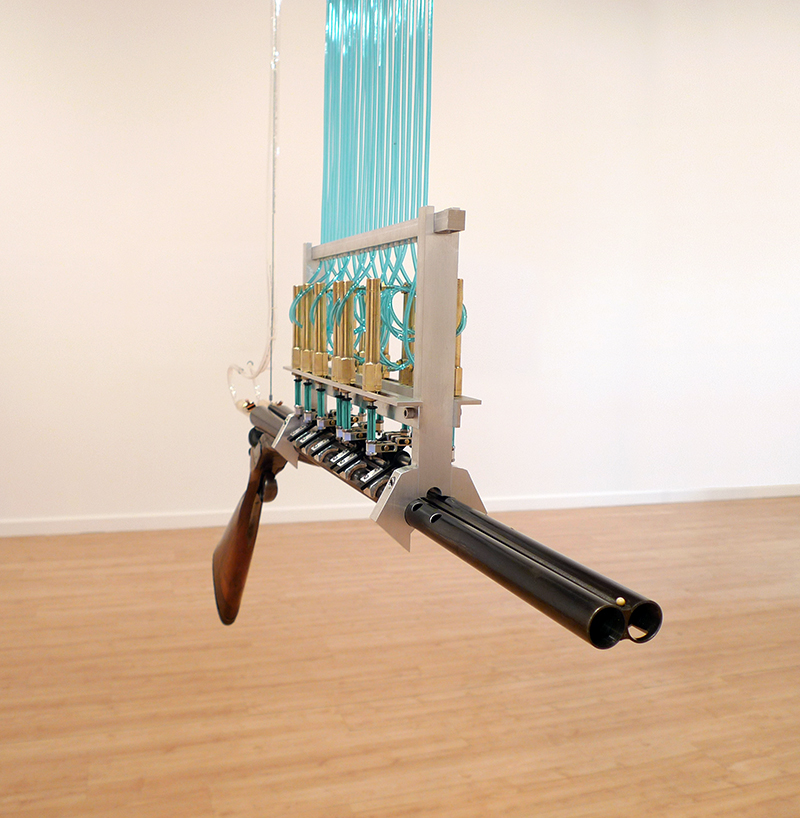Today’s project is The Last Gun, an installation work by Constantine Zlatev, an artist in San Francisco. The installation sonifies weapon exports between 1960 and 2010. Constantine was so kind to answer some questions which helped in writing this post.
Mapping
The sonification is very straightforward: when there is a rise in arms export, a somber melody plays. When there is a fall in exports, a celebratory melody is played. The time scale of the installation is dependent on the exhibition space. Typically, one year is represented in 7 or 10 minutes in ‘real’ time. The melodies are only played for one minute, leaving the rest of the interval silent until the next year is triggered. When the dataset reached the end, it restarts from the beginning. Besides the sonification, the data are displayed using a Raspberry Pi.
The melody
Constantine got his inspiration from the movie The Last of the Mohicans, set during the time of the historically decisive Seven Years’ War, a global conflict involving all the major European and North American powers of the time. He makes a value judgment on the base that arms exports are bad so a rising export will result in a somber melody, based on the main theme of the soundtrack. When there is a drop, the celebratory melody, based on the celebratory The Kiss theme (The Gael) will sound.
Instrumentation- sculptural element
The melodies are played with an old two-barrel gun that is repurposed and functions as a kind of flute. An Arduino drives the actuators for the holes and the airflow so the melody is played physically. The Last Gun is inspired by the Native American flute but built to play one full-octave C4 chromatic scale. One barrel plays the natural notes, the other the sharp notes.
Chifte Kavali: related work and future iterations
Chifte Kavali is a similar sonification sculpture, using the same dataset but different melodies and different flutes. Chifte Kavali is based on the wooden Kaval flute, a mountain shepherds’ instrument originating in the Balkans. Chifte Kavali consists of two flutes (each barrel is a full flute) that can play together or independently of each other. One barrel plays in C4 and the other plays in C5.
As they are now, both installations are displayed and perform as individual installations and play specific music that has been programmed in for each of the flutes. In the future, Constantine hopes to have three gun flutes connected together in a single art installation that will cover enough notes that it’ll be possible to stream almost any music, rather than embedding particular melodies.
Concept and aesthetics
Constantine considers the conceptual part the most defining in his practice, and an essential one which drives his project to completion. His work goes through phases of experimentation and learning. Sculptural and aesthetic elements are important but functionality is important as well.
With The Last Gun and Chifte Kavali, the concept revolves around giving weapons a different function, specifically, transforming shotguns into musical flutes. So in this case, the sound mattered as much as the mechanics & sculptural aesthetics. Yet, the goal was not to make perfect musical instruments and the gun flutes “have not been pushed to the limits of their musical potential yet”.
About the artist
Constantine Zlatev is an artist based in San Francisco. His practice revolves around installations and sculptures with repurposed materials. In his studio, he works with Kostadin Ilov, who takes care of the electronic engineering and Velina Ruseva who wrote the melodies for the barrel instruments.


